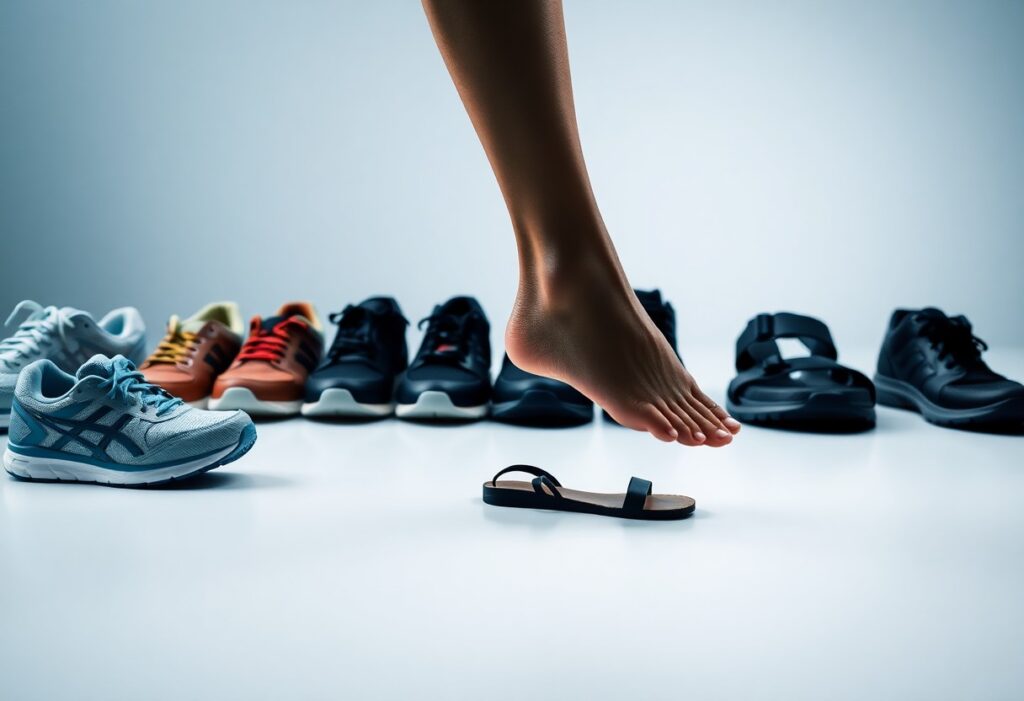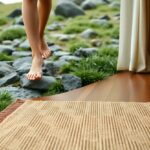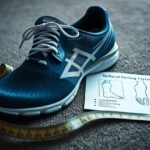
As you take each step, the footwear you opt for can either profoundly enhance or negatively impact your foot health. Many people mistakenly believe that shoes with extra cushioning and support are the best answer to foot discomfort; however, traditional footwear can often cause more harm than good. Dr. Alissa Kuizinas, a respected podiatrist from Massachusetts, strongly advocates for barefoot shoes or minimalistic shoes, noting that these options help in developing stronger and healthier feet. By choosing footwear that allows your feet to function naturally, you can significantly reduce the chances of experiencing foot problems and improve your overall foot wellness.
Exploring the Hidden Dangers of Conventional Footwear
While conventional shoes may provide temporary relief for foot pain, they frequently exacerbate existing conditions and introduce additional complications, as highlighted by Dr. Alissa Kuizinas. She points out that the $133 billion shoe industry often prioritizes style and profitability over genuine foot health, resulting in designs that can constrict and weaken your feet over time. This reliance on traditional footwear can create a cycle of dependency that ultimately undermines your foot health, making it crucial to re-evaluate your choices.
Uncovering the Shoe Industry’s Misguided Approach to Foot Health
At the heart of this issue lies the shoe industry’s skewed perspective on addressing foot health, often emphasizing the addition of excessive cushioning, support, and rigid structures in shoes without addressing the root causes of discomfort. This misguided strategy can cultivate a dependency on shoes that may actually weaken your foot health over time, resulting in various complications that could have been prevented with better design choices.
Recognizing the Limitations of Traditional Shoe Design
Traditional shoe designs typically incorporate narrow toe boxes, stiff soles, and excessive cushioning, which can impede natural foot movement, ultimately leading to weak and dysfunctional feet. Dr. Kuizinas emphasizes that footwear should protect your feet from external elements, rather than restrict their natural functionality. A well-constructed shoe should prioritize natural foot mechanics and feature minimalist characteristics such as wide toe boxes, flexible yet flat soles, and minimal cushioning to promote optimal foot health.
By adopting barefoot shoes or minimalistic footwear, you can actively fortify your feet and enhance your overall foot wellness. Dr. Kuizinas endorses a philosophy of utilizing as little shoe as necessary, allowing your feet to function naturally and move freely, which is vital for sustaining healthy foot mechanics and overall well-being.
The Essential Importance of Allowing Natural Foot Movement
Footwear that restricts your foot’s natural movement can lead to various foot issues and discomfort. It’s crucial to assess how your shoe choices impact your overall foot health and comfort levels to make informed decisions.
Evaluating How Shoes Affect Your Foot Mobility
To fully understand the impact of shoes on your foot’s mobility, it is essential to analyze the specific designs and features of your footwear. Traditional shoes often incorporate cushioning and support elements that can actually hinder your feet from moving naturally, leading to weak and dysfunctional feet over time. This limitation can stifle your feet’s ability to develop the strength and flexibility they need for optimal function.
Reaping the Benefits of Natural Foot Mobility
The benefits of allowing your feet to move freely are considerable, as healthy feet are essential to overall foot health. By choosing minimalistic shoes or barefoot footwear, you enable your feet to function as intended, promoting strength and resilience.
Natural movement is critical for developing strong feet. When confined by conventional footwear, you risk encountering various foot problems and discomfort. In contrast, embracing minimalistic shoes or barefoot options can significantly improve your foot health by allowing natural movement, which facilitates strength-building. By selecting the right footwear, you can reduce the likelihood of foot issues and enhance your overall foot wellness.
Understanding the Concept of Functional Footwear
Gaining a comprehensive understanding of functional footwear is vital, as these shoes prioritize both foot health and natural movement. Functional shoes are specifically designed to enable your feet to operate as intended, eliminating the need for excessive support or confinement.
Defining Functional Shoes: Key Features That Matter
Upon conducting research and testing various shoe styles, you’ll find that functional footwear includes distinct characteristics, such as a wide toe box, flat and flexible soles, along with minimal cushioning and support. These features empower your feet to move freely and naturally, fostering stronger and more effective foot mechanics.
Enhancing Foot Health Through Functional Footwear
Wearing functional shoes brings numerous benefits, including improved foot strength, a reduced risk of injury, and enhanced overall foot health. These shoes facilitate your feet in functioning as they were designed to, paving the way for stronger feet and better balance in your everyday activities.
In essence, functional footwear is crafted to support your feet without imposing unnecessary restrictions, allowing them to move and flex naturally. This design philosophy promotes optimal foot health and minimizes the chances of developing foot ailments. By selecting functional shoes like barefoot shoes or minimalistic options, you actively foster healthy foot function and reduce the risk of foot pain and injuries. Transitioning to functional footwear may require patience and gradual adjustment, but the long-term benefits for your foot health are truly invaluable.
Identifying the Key Features of Functional Footwear
To achieve the best foot health, it’s crucial to seek out shoes that possess specific features. The essential attributes to consider include:
- Wide toe box
- flat and flexible soles
- Minimal cushioning and support
Being mindful of these characteristics will significantly assist you in choosing shoes that promote healthy foot function and support.
The Importance of Wide Toe Boxes and Flexible Soles in Footwear
A vital feature of functional shoes is a wide toe box, which allows your toes to spread naturally. This design helps prevent toe jamming and other discomfort-related issues that could lead to chronic foot pain, ensuring a more comfortable fit.
Understanding the Need for Minimal Cushioning and Support
In addition to a wide toe box, functional shoes should also include minimal cushioning and support. This component allows your feet to move naturally while strengthening foot muscles, thereby decreasing the risk of foot issues.
It’s important to emphasize that minimalistic footwear, including barefoot shoes, can substantially benefit your foot health by allowing your feet to operate freely. By selecting shoes with minimal cushioning and support, you can enhance muscle strength in your feet and lower the chances of injuries. This strategic approach not only improves your overall foot health but also reduces the likelihood of experiencing chronic pain. Therefore, you should prioritize shoes that enable your feet to move naturally without excessive cushioning or support.
Successfully Transitioning to Functional Footwear
Having recognized the significance of functional footwear, it’s time to embark on your transition. Contrary to the prevalent belief that more cushioning and support equates to better comfort, you should aim for minimalistic shoes or barefoot shoes that facilitate your feet’s natural functioning.
Practical Steps for Transitioning to Functional Footwear
Despite any hesitations, start integrating functional shoes into your daily routine with these practical recommendations:
- Begin with short walks and gradually increase the distance
- Choose shoes that feature a wide toe box and flat soles
- Opt for minimal cushioning and support
The key is to give your feet time to adjust to the new shoes, while simultaneously strengthening the muscles in your feet.
Emphasizing Patience and Gradual Adjustment in Your Transition
Transitioning to functional footwear requires patience and a thoughtful approach. Shoes that are overly minimalist may cause discomfort and pain if your feet are not used to them. Starting slowly is crucial, allowing your feet to acclimate to the new footwear.
Footwear options like barefoot shoes or minimalistic shoes can be extremely advantageous for your foot health, but it is essential to introduce them gradually. Overuse or improper sizing can lead to injuries or ongoing discomfort. The ultimate goal is to strengthen your foot muscles while enhancing your overall foot health, so be patient and refrain from rushing through the process. The benefits will be significant; expect to experience better balance, less pain, and stronger feet as you adapt.
Building Strong and Functional Feet for Lifelong Health
Even in a society where wearing shoes with excessive cushioning and support is commonplace, you can cultivate robust and functional feet by selecting the right footwear.
Understanding How Foot Strength Affects Overall Health
In conjunction with other health considerations, foot strength plays a crucial role in your overall well-being, influencing your balance, posture, and movement capabilities. Recognizing this relationship empowers you to make informed choices about your footwear.
How Functional Footwear Fosters Strong Feet
Functionally designed shoes that incorporate a wide toe box, flat and flexible soles, and minimal cushioning are fundamental in developing strong feet, as they promote natural movement.
Indeed, wearing functional shoes or barefoot shoes can greatly assist in building stronger foot muscles and enhancing your overall foot health. By allowing your feet the freedom to move and function naturally, you can significantly lower the risk of foot problems and optimize your balance and stability. As you transition to minimalistic shoes, you can look forward to improvements in your walking technique and an overall sense of well-being.
By taking control of your foot health, you can select shoes that enhance your feet’s natural functions instead of hindering them. Choosing barefoot shoes or minimalistic options that allow your feet to operate naturally will facilitate strength development over time. In doing so, you’ll experience increased stability and comfort during activities, granting your feet the opportunity to grow strong and capable. Start your journey by seeking shoes with a wide toe box, flat and flexible soles, and minimal cushioning and support, while exercising patience as you transition to a more natural walking style.
The Article A Podiatrist’s Guide to How Shoes Affect Your Foot Health appeared first on My Shoes Finder
The Article How Shoes Impact Your Foot Health: A Podiatrist’s Insights Was Found On https://limitsofstrategy.com







Oh, the saga of shoes—it’s like an ongoing tale of mischief where our feet are the unsuspecting protagonists! I must say, your insights about the perils of conventional shoes really resonate with me. I once made the mistake of splurging on what I thought were the “comfiest” pair of shoes, which promised arch support and cushioned bliss. Fast forward a few weeks, and you’d think I’d signed a pact with a foot-related conspiracy! Every step I took felt like a small rebellion against my ankles.